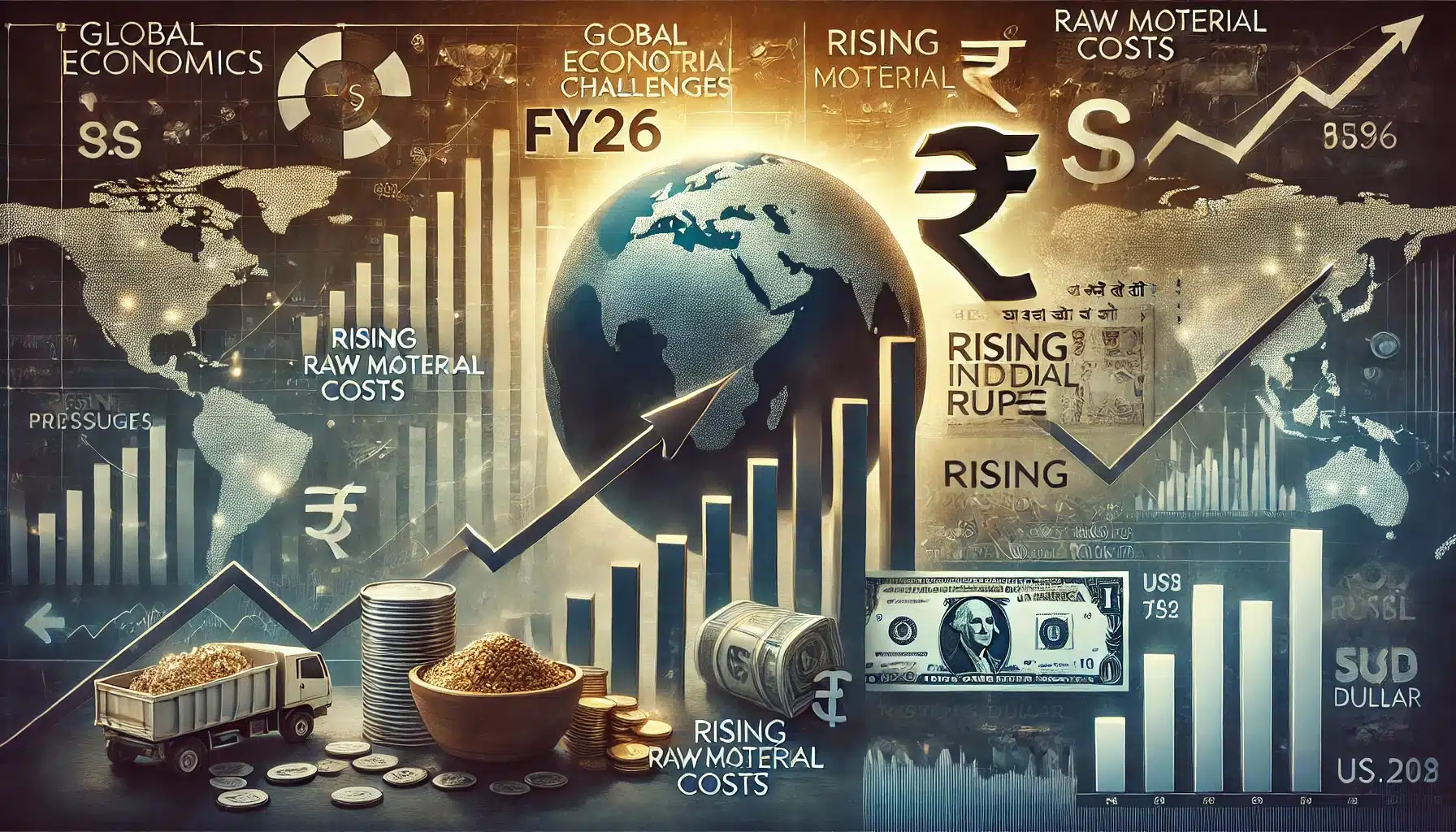Inflation Risks Looming for FY26

Inflation is a pressing concern for the financial year 2026, according to a recent report by DAM Capital. The report highlights that inflation is expected to decline to 4.5% from its current levels, but several factors could hinder this progress. Rising raw material costs, particularly in agriculture, food, and metals, are significant contributors to the persistent inflation. As demand increases, businesses may raise prices, directly impacting consumers. Additionally, external factors such as the ongoing tariff war and the depreciation of the Chinese Yuan could further complicate the inflation landscape in India.
Domestic Pressures Driving Inflation
The report emphasizes that domestic pressures are the primary drivers of inflation in India. The pass-through effect of rising raw material costs is particularly evident in essential sectors like agriculture and food. As these costs rise, businesses are likely to increase their prices, which will ultimately affect consumers. The demand for goods and services continues to grow, further exacerbating the situation.
Moreover, the agricultural sector faces unique challenges. Weather conditions, crop yields, and supply chain disruptions can all lead to fluctuations in food prices. As food constitutes a significant portion of the consumer price index, any increase in food prices can have a substantial impact on overall inflation.
The report also points out that external factors, such as the ongoing tariff war and the depreciation of the Chinese Yuan, add another layer of complexity. As the Yuan weakens, it could lead to increased costs for imported goods, further straining the Indian economy. This combination of domestic and external pressures creates a challenging environment for policymakers aiming to control inflation.
The Impact of Currency Depreciation
The performance of the Indian Rupee against the US dollar is another critical area of concern. The report predicts that the Rupee will depreciate to an average of 86.50-87.0 against the dollar by FY26. This marks a consistent weakening trend, as the Rupee has already dropped from 84 to 85 in just two months. The depreciation of the Rupee can have far-reaching implications for the Indian economy.
A weaker Rupee makes imports more expensive, which can lead to higher inflation. The growing trade deficit, particularly with rising imports, exacerbates the Current Account Deficit (CAD), which is expected to reach 1.4% of GDP in FY26. The widening gap between Indian and US interest rates, driven by the US Federal Reserve’s higher interest rates, is attracting capital flows into the dollar. This trend further pressures the Rupee and complicates the inflation outlook.
Experts suggest that the Reserve Bank of India (RBI) may allow for this depreciation, but it could intervene using forex reserves and policy adjustments to prevent excessive falls. The fair value of the Rupee, based on the Real Effective Exchange Rate (REER) index, is estimated to be around 90, indicating that the INR is currently overvalued by more than 8%.
Geopolitical Tensions and Global Economic Factors
Geopolitical tensions and global economic factors also play a significant role in shaping India’s inflation outlook. The report highlights that policies from major economies, such as former U.S. President Donald Trump’s “Make America Great Again” agenda, could spur demand for the US dollar. This demand can lead to a stronger dollar, further complicating India’s inflation scenario.
Additionally, the slowdown in China’s economy and the widening disparity in global growth favoring the US could lead to a stronger dollar. This situation puts additional pressure on the Rupee and could exacerbate inflation in India.
Despite these challenges, there may be some silver linings. The report notes that China’s deflationary pressures and the resulting Yuan depreciation could make Chinese exports more competitive. This could potentially ease inflationary pressures in India by lowering the cost of imported goods.
Observer Voice is the one stop site for National, International news, Sports, Editor’s Choice, Art/culture contents, Quotes and much more. We also cover historical contents. Historical contents includes World History, Indian History, and what happened today. The website also covers Entertainment across the India and World.

